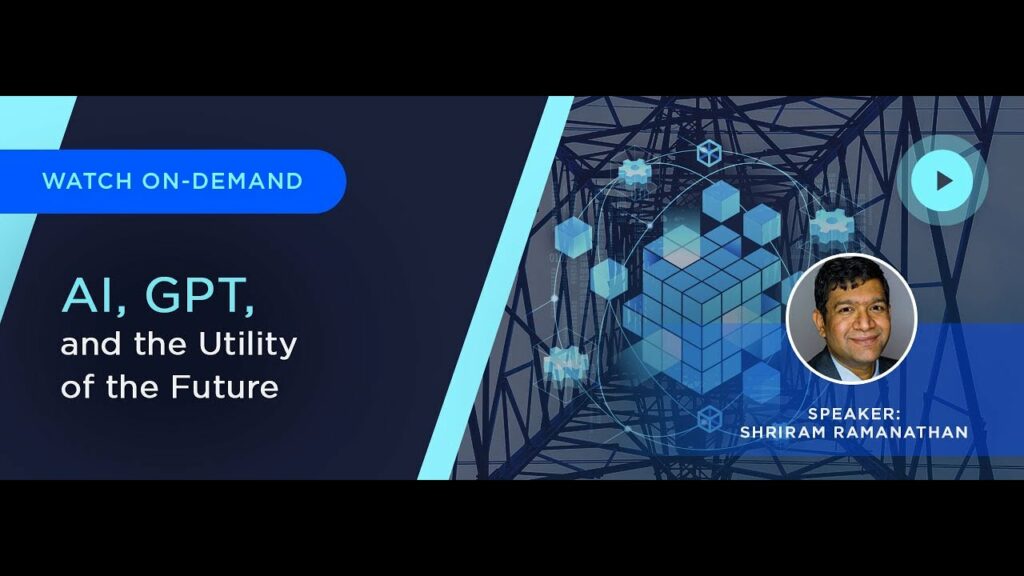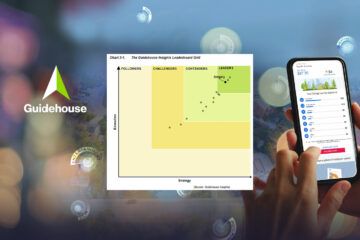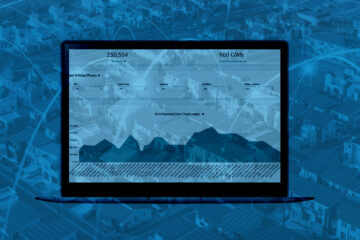
Watch our on-demand webinar AI, GPT and the Utility of the Future to continue to explore this topic.
Artificial intelligence (AI) is in the headlines nearly everyday, with academics, business leaders and government officials debating the promise and potential peril of this revolutionary new phase in our digital age. While the jury is still out on the pros and cons of AI, Bidgely strongly believes that AI is imperative for the energy transition and to realize a clean energy future.
For example, as millions of customers adopt electric vehicles and generate a growing percentage of our electricity needs, the growing demand-supply imbalance is increasing stress on the grid infrastructure. To manage the grid impacts of electrification and renewable energy adoption, Bidgely is equipping utilities with our patented out-of-the-box UtilityAI™ platform, informed by trillions of data points from millions of households worldwide.
UtilityAI equips utilities with the energy intelligence they need to evolve, prioritize investments, and achieve greater efficiency, resilience and growth. We’re empowering our utility partners to achieve clean energy goals on an accelerated timeline, while helping them mitigate grid disruptions and improve operational efficiency. Utility teams are able to focus on higher-value work that better aligns with imperatives like decarbonization and establishing the customer engagement that will make the energy transition possible.
But how did we get here, and what does the future of energy AI hold?
AI’s Evolution, And Bidgely’s Place in It
The dawn of the science of AI can be traced back to the 1940s, and it has been steadily evolving for nearly 70 years. But it was not until the 1990s — the decade when IBM’s Deep Blue defeated world chess champion Gary Kaparov — when computers offered enough computational power to leverage AI’s potential.
Even then, AI remained a niche technology. It was only when big data began to emerge in the early 2000s that the science of AI could, for the first time, be broadly applied to optimize business operations across industries. Apple integrated Siri into its
iPhones, IBM Watson won Jeopardy, and Google’s AlphaGo won the World Go Championship.
In 2012, just as the use of AI in business applications began to explode, Bidgely was founded. Our mission was to offer an out-of-the-box AI platform designed to solve the utility industry’s biggest challenges — especially as those challenges related to achieving a clean energy future. We saw a means to do that by providing utilities and consumers with energy intelligence to enable them to make smarter, data-driven energy decisions.
We earned our first energy AI patent that year for “systems and methods for improving the accuracy of appliance level disaggregation in non-intrusive appliance load monitoring techniques” (US9612286B2). Since then, as the leader in AI-based, behind-the-meter data science, we’ve added 16 additional patents to a growing treasury of innovation.
One of our earliest advances was the ability to perform “unsupervised clustering” of energy use data. Historically, human beings had to evaluate datasets and manually assign them a category. With unsupervised clustering, machine learning assigns datasets to categories without human intervention. In the utility space, Bidgely used unsupervised clustering to disaggregate household energy consumption at the appliance level. Using signatures unique to every appliance, our algorithms are able to determine not only which appliances were present in a home, but also how much energy each appliance consumes, and when they turn on and off. Every time the platform engages in unsupervised clustering, the fidelity of our models improves, and the platform automatically categorizes and labels datasets with greater and greater accuracy.
Over time, we incorporated other machine learning techniques related to pattern recognition and time series data analysis. Using a combination of AI approaches, we are able to detect when a pool pump, HVAC system or other specific appliance is running, determine whether an appliance is running efficiently, identify whether a household has purchased an EV or solar or reveal when the home owners are on vacation. And we continue to be able to deliver energy intelligence with very high accuracy — 90+% for appliance detection and 85+% accuracy for appliance consumption. By rolling up massive datasets at a zip code level, we can accurately predict future energy trends across multiple homes, communities, and entire service territories.
Generative AI: How Utilities Are Poised to Benefit
2023 was the breakout year for generative AI. And while it feels unprecedented and revolutionary, some argue that it can be viewed as a logical next step in the evolution of machine learning.
Recognizing the pivotal impact of the technology, Capgemini Research Institute reports that 33 percent of utility and energy companies worldwide have begun to pilot GPT solutions, and nearly 40 percent of utility and energy companies have established a dedicated team and budget for generative AI.
But what does generative AI mean for utilities? Why is it a game-changer? How does what we can achieve with generative AI compare to traditional AI algorithms?
Traditional AI has proven essential in empowering utilities with an accurate means to detect appliances, profile household consumption, granularly segment customers, more intelligently plan grid infrastructure, and more. Now, generative AI promises to further amplify operations.
To understand the potential, it is useful to take a closer look at how the human brain works.
Our brains can store approximately one terabyte of data. Which begs the question, with that limitation, how did we get to where we are today? How were we able to put humans on the moon? How are we able to send spacecraft to Mars and beyond? How are we able to build massive buildings and bridges?
The answer lies in what is known as reductionism. Our brain doesn’t store all the data we need to achieve great feats. Instead, we use mental models to approximate the data and we leverage creativity to extrapolate and fill the gaps in our mental models.
That’s what generative AI does as well.
If you show a traditional AI algorithm an elephant, it will capture every pixel on that elephant and describe the animal in excruciating detail. And if you ask a traditional AI algorithm to draw an elephant, it will draw more or less the same elephant over and over again.
Generative AI, on the other hand, builds a model of an elephant. It “models” the elephant as an animal that has big fan-like ears, pillar-like legs, and a rope-like tail. And if you ask generative AI to draw an elephant, the animal will look different each time. Sometimes the trunk might be in the wrong place, for example. But that’s how generative AI shows its creativity. And that is why generative AI can create realistic looking photos that may be absolutely impossible, like an elephant standing on the wing of a plane.
What we’re trying to achieve with generative AI is incremental creativity (or as I call it, ‘duct tape creativity’) to fix the problems around us.
Bidgely realizes GPT is a game changer. We have already started innovating in this space with our “EnerGPT” application and are exploring a wide-range of potential generative AI use cases.
Consider the impact of GPT on customer experience. A customer becomes alarmed that his or her electricity bill is much higher than normal. Enter EnerGPT. The customer tells EnerGPT that something abnormal is happening this month. EnerGPT analyzes the customer’s energy data and provides a natural language response to confirm that the customer’s costs have gone up nearly 40 percent even though the household usage is normal, indicating something else is wrong. EnerGPT is able to determine the cause of the spike – informing the customer that the pool pump is operating during peak hours, and providing a recommended fix for the issue by reprogramming the pool pump timer so that it runs during off-peak hours.
EnerGPT will improve grid operations as well. Imagine an operational manager who is interested in learning which of the utility’s substations are seeing the highest generation from rooftop solar installations. EnerGPT is able to generate a list right away. Or if the operations manager requests the 8760 visualization of power consumption for that substation for the entire year, EnerGPT is able to generate that chart and break it down and show how the consumption has changed hour-by-hour.
EnerGPT will handle the most complex inquiries with ease. How many EVs do we have? EnerGPT will provide an accurate count and detail where they are located. How many of those EV owners have solar installed? EnerGPT will pinpoint the residences that have both an EV and solar, and can also determine when renewable generation is highest at each home to identify the optimal time for EV charging on a household-by-household basis.
With AI-powered consumption insights this advanced, utilities will be able to unlock significant financial savings. For example, EV load shifting has the potential to save utilities more $1,350 per EV every year in bulk system investments and $1,090 per EV every year in distribution system investments, which will yield growing gains as EV adoption scales.
Looking beyond economics at the bigger picture, AI is already playing a pivotal role in the clean energy transition, and with GPT, that role is poised to grow exponentially. Machine learning coupled with its incremental creativity will amplify utility’s ability to achieve their decarbonization goals and mitigate grid disruptions — all while dramatically improving operational efficiency and customer satisfaction.
Putting AI and GPT to Work
Watch our on-demand webinar AI, GPT and the Utility of the Future to continue to explore this topic, and connect with our team at [email protected] to learn more about how to maximize the benefit of AI and GPT for your utility.


